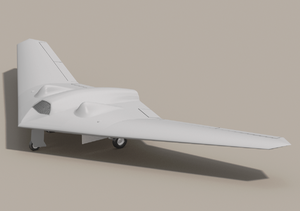RQ-170
| RQ-170 Sentinel | |
|---|---|
 |
|
| Artist's rendering | |
| Role | Unmanned aerial vehicle |
| Manufacturer | Lockheed Martin |
| Introduction | 2007 |
| Status | In service |
| Primary user | United States Air Force |
| Number built | ~20 |
The Lockheed Martin RQ-170 Sentinel is an unmanned aerial vehicle (UAV) developed by Lockheed Martin and operated by the United States Air Force (USAF) for the Central Intelligence Agency (CIA). While the USAF has released few details on the UAV's design or capabilities, defense analysts believe that it is a stealth aircraft fitted with aerial reconnaissance equipment.
RQ-170s have been reported to have operated in Afghanistan as part of Operation Enduring Freedom. It has been confirmed that the UAVs have operated over Pakistan and Iran; operations over Pakistan included sorties that collected intelligence before and during the operation which led to the death of Osama bin Laden in May 2011.
In December 2011, the Iranian armed forces captured an RQ-170 flying over Iran. The U.S. military has acknowledged losing an RQ-170 in the region. United States administration asked Iran to return the UAV. Iran denied the request and lodged a complaint to the UN Security Council over airspace violation by the U.S.
The RQ-170 Sentinel was developed by Lockheed Martin's Skunk Works as a stealth Unmanned Aerial Vehicle (UAV). Journalists have noted design similarities between the RQ-170 and previous stealth and UAV programs such as the RQ-3 DarkStar and Polecat. It is a tailless flying wing aircraft, very similar in shape and dimensions to German WW II fighter-bomber Gotha Go-229, with pods, presumably for sensors or SATCOMs, built into the upper surface of each wing. Few details of the UAV's characteristics have been released, but estimates of its wingspan range from approximately 65 feet (20 m) to 90 feet (27 m). In a December 2012 report, journalist David Axe stated that "20 or so" RQ-170s had been built.
...
Wikipedia
